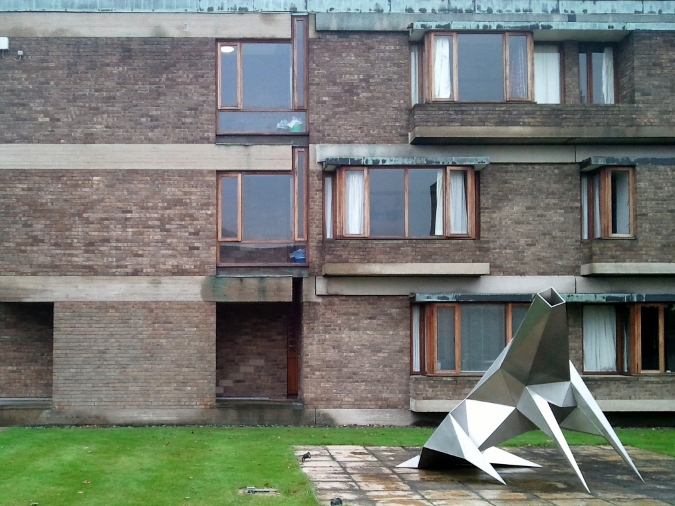

76 Storey’s Way, now “Hostel V” to the bedders, was once more vividly known as “Storey’s End”. In those days it belonged to Ludwig Wittgenstein’s doctor; Wittgenstein himself lived here during the final three months of his life, and is buried in a cemetary just around the corner.
So far I’ve been disappointed in my hopes of having a copy of the Tractatus flung at me by an irritated poltergeist. The author probably couldn’t find his way through the house these days—the previous occupants’ imposing stone facade and dense shrubbery remain, but the interior walls have been shuffled: parlors and servants’ quarters made into bedrooms, kitchens re-floored in linoleum, bathrooms subdivided into smaller bathrooms to house hastily-installed showers. The garden, too, has been repurposed, to house a teaching greenhouse, an art studio and a mysterious wooden shed whose sole purpose seems to be the storage of cheap liquor.
For a fraction of what I once paid for a windowless partition in a decrepit Bushwick loft, I have the largest bedroom I’ve ever occupied, with three closets, a bricked-up fireplace, and a view onto our quiet, leafy street. Each morning, a member of college staff arrives to clean the kitchen and bathrooms, take out the trash, and leave pleading, laminated requests for cleanliness1. (This cheerful woman is known in Cambridge parlance as a “bedder”; if I lived in proper college housing she would actually straighten the inside of my room as well!).
The confusingly-named Hostels—stately Victorian homes wedged between the Churchill and Trinity Hall playing fields—are the main graduate accommodation provided by the college. Next door is the Fitzwilliam Master’s Lodge, and then more Churchill housing. Near the end of the campus are family flats and a cluster of more modern single-occupancy apartments which are known as the “Pepperpots” but resemble no receptacle I have ever seen used for storing spices. The street terminates in a bright red mailbox bearing the royal cypher of George VI.
Churchill College itself is a great deal less picturesque—the archetype of certain regrettable architectural fashions of the 1960s. Unfinished brick and concrete planes project awkwardly from the corners of every building; wooden window casings stubbornly refuse to line up with each other or lie flush in the faces of the walls that contain them; vaguely menacing cubist beast-sculptures rise up at intervals from obsessively-tended lawns. The only feature I really enjoy is the airy, wood-paneled dining hall, where I (surprisingly often) find myself lingering in conversation over a plate of rudely boiled root vegetables or a glass of wine.

Things are quieter here than in the center of town. Ugly Churchill attracts few tourists, and neighboring Fitz and Murray Edwards even fewer, so the only traffic comes from scientists and students en route to the math department or laboratories at the West Cambridge Site. These two locations also conveniently house all of my lectures and research meetings, and without occasional obligations at Queens’ and Sunday trips to the farmers’ market it would be very easy to forget about the existence of the medieval City altogether.
“Would you please ensure that you flush this toilet after use.” “Won’t you please put your dishes away when they are dry as there is very little counter space in the kitchen.” ↩